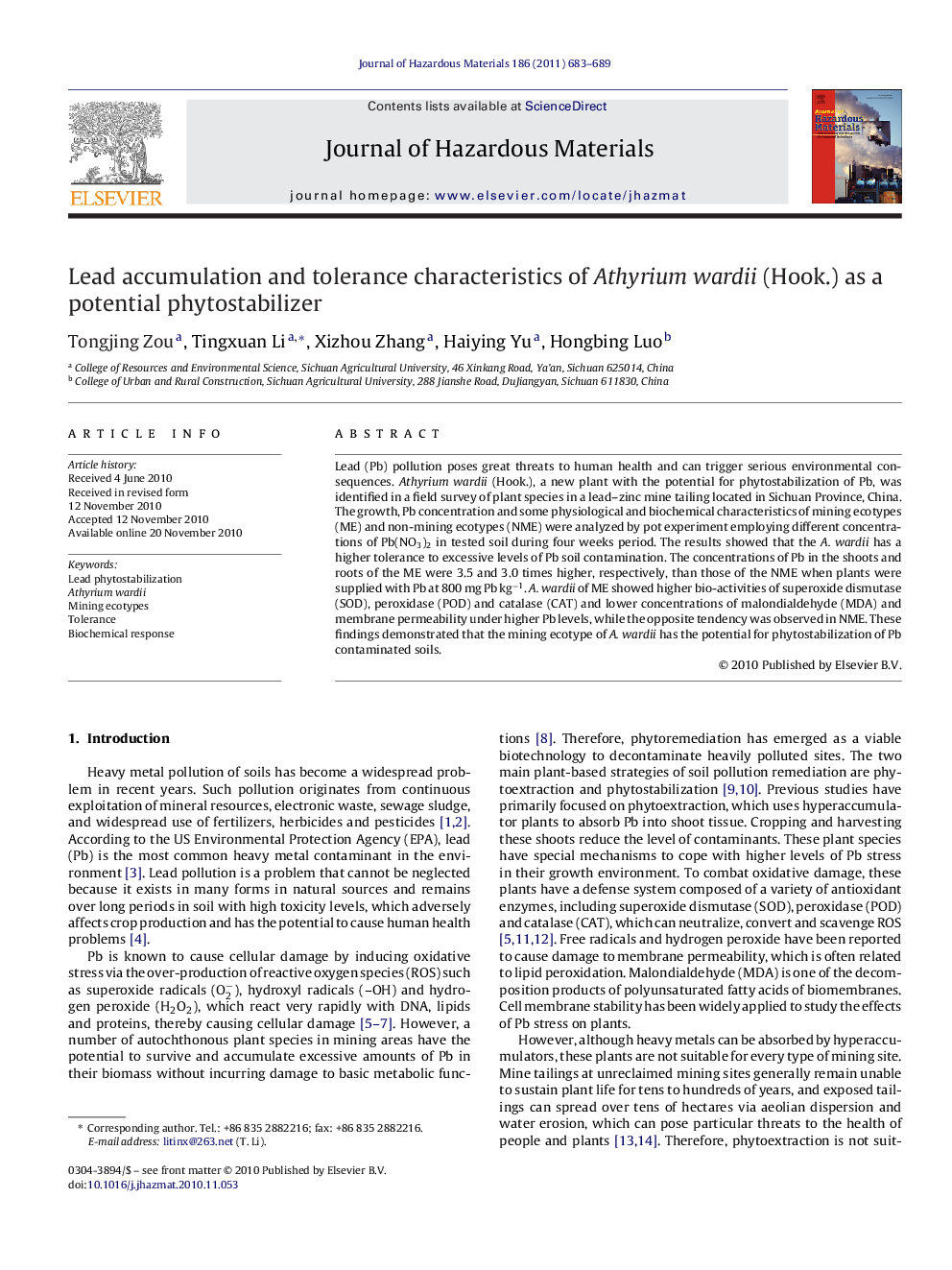| Article ID | Journal | Published Year | Pages | File Type |
|---|---|---|---|---|
| 10372778 | Journal of Hazardous Materials | 2011 | 7 Pages |
Abstract
Lead (Pb) pollution poses great threats to human health and can trigger serious environmental consequences. Athyrium wardii (Hook.), a new plant with the potential for phytostabilization of Pb, was identified in a field survey of plant species in a lead-zinc mine tailing located in Sichuan Province, China. The growth, Pb concentration and some physiological and biochemical characteristics of mining ecotypes (ME) and non-mining ecotypes (NME) were analyzed by pot experiment employing different concentrations of Pb(NO3)2 in tested soil during four weeks period. The results showed that the A. wardii has a higher tolerance to excessive levels of Pb soil contamination. The concentrations of Pb in the shoots and roots of the ME were 3.5 and 3.0 times higher, respectively, than those of the NME when plants were supplied with Pb at 800 mg Pb kgâ1. A. wardii of ME showed higher bio-activities of superoxide dismutase (SOD), peroxidase (POD) and catalase (CAT) and lower concentrations of malondialdehyde (MDA) and membrane permeability under higher Pb levels, while the opposite tendency was observed in NME. These findings demonstrated that the mining ecotype of A. wardii has the potential for phytostabilization of Pb contaminated soils.
Keywords
Related Topics
Physical Sciences and Engineering
Chemical Engineering
Chemical Health and Safety
Authors
Tongjing Zou, Tingxuan Li, Xizhou Zhang, Haiying Yu, Hongbing Luo,
